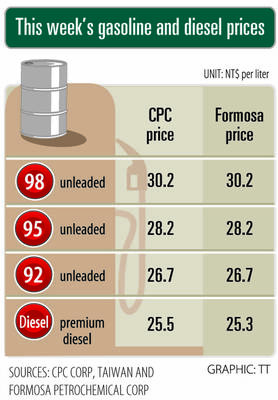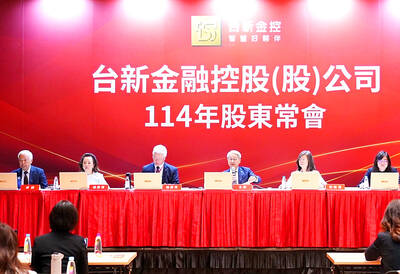Global smartphone shipments are expected to grow at a slower annual rate of 12.4 percent next year, due to the growing penetration rate of smartphones, a market research team at Taipei-based TrendForce Corp (集邦科技) said yesterday.
Growth would slow down compared with this year’s forecast 25.9 percent, TrendForce said.
Global smartphone shipments are set to increase to 1.16 billion units this year and the number would expand to 1.31 billion units next year, it said.
“The longer life cycle of smartphones also slows down replacement demand and weakens growth momentum,” TrendForce analyst Avril Wu (吳雅婷) told the Taipei Times by telephone.
Chinese smartphone companies would be the main growth drivers, with shipments forecast to grow 17 percent next year, Wu said.
Wu said she previously predicted that global smartphone shipments would only increase 25 percent from last year. Strong sales of Apple Inc’s new iPhone 6 series would boost the shipment growth by 0.9 percent, she said.
Apple’s better-than-expected iPhone sales was driven by consumers’ demand for larger-screen smartphones, rather than a hardware upgrade, Wu said.
However, Android or Windows system users might be more price-oriented as there are many similar products on the market, she said, adding that the strong sales of Asustek Computer Inc’s (華碩) Zenfone smartphones was driven by its affordable price.
Asustek recently said it sold more than 1 million Zenfones in Taiwan since the product’s launch in April, and more than 1 million units per month worldwide.
Wu said HTC Corp (宏達電) promoted a series of mid-priced smartphones this year, including the Desire 816, Desire 820 dual SIM and Desire 620, which suggest the company is also striving for a share of the mid-priced market.
Wu said mid-priced smartphones with high-performance ratios might still be smartphone players’ growth driver next year, but added that these products might also bring limited profitability to the companies because of the lower gross margin compared with high-priced products.
Wu said she expects manufacturers of mid-priced smartphones to face fierce price competition in the markets, especially in China, where many players target this segment.
The analyst said she predicts the product differentiation trend for high-end smartphones to focus on hardware innovations, such as dual or multiple lenses, or 3D screen display.

Greek tourism student Katerina quit within a month of starting work at a five-star hotel in Halkidiki, one of the country’s top destinations, because she said conditions were so dire. Beyond the bad pay, the 22-year-old said that her working and living conditions were “miserable and unacceptable.” Millions holiday in Greece every year, but its vital tourism industry is finding it harder and harder to recruit Greeks to look after them. “I was asked to work in any department of the hotel where there was a need, from service to cleaning,” said Katerina, a tourism and marketing student, who would

i Gasoline and diesel prices at fuel stations are this week to rise NT$0.1 per liter, as tensions in the Middle East pushed crude oil prices higher last week, CPC Corp, Taiwan (台灣中油) and Formosa Petrochemical Corp (台塑石化) said yesterday. International crude oil prices last week rose for the third consecutive week due to an escalating conflict between Israel and Iran, as the market is concerned that the situation in the Middle East might affect crude oil supply, CPC and Formosa said in separate statements. Front-month Brent crude oil futures — the international oil benchmark — rose 3.75 percent to settle at US$77.01

As they zigzagged from one machine to another in the searing African sun, the workers were covered in black soot. However, the charcoal they were making is known as “green,” and backers hope it can save impoverished Chad from rampant deforestation. Chad, a vast, landlocked country of 19 million people perched at the crossroads of north and central Africa, is steadily turning to desert. It has lost more than 90 percent of its forest cover since the 1970s, hit by climate change and overexploitation of trees for household uses such as cooking, officials say. “Green charcoal” aims to protect what

NEW BEGINNING: The merger would be named TS Financial Holding Co and would become Taiwan’s fourth-largest financial holding company by total assets The merger of Taishin Financial Holding Co (台新金控) and Shin Kong Financial Holding Co (新光金控) is set to be finalized on July 24, Taishin Financial Chairman Thomas Wu (吳東亮) said yesterday. Speaking at the company’s annual general meeting in Taipei, Wu said that the merged entity would be named TS Financial Holding Co (台新新光金控) and would become the fourth-largest financial holding company in Taiwan by total assets. The two companies first announced the merger in August last year, and after receiving approval from shareholders a month later, the Fair Trade Commission in January, and the Financial Supervisory Commission in March, the merger